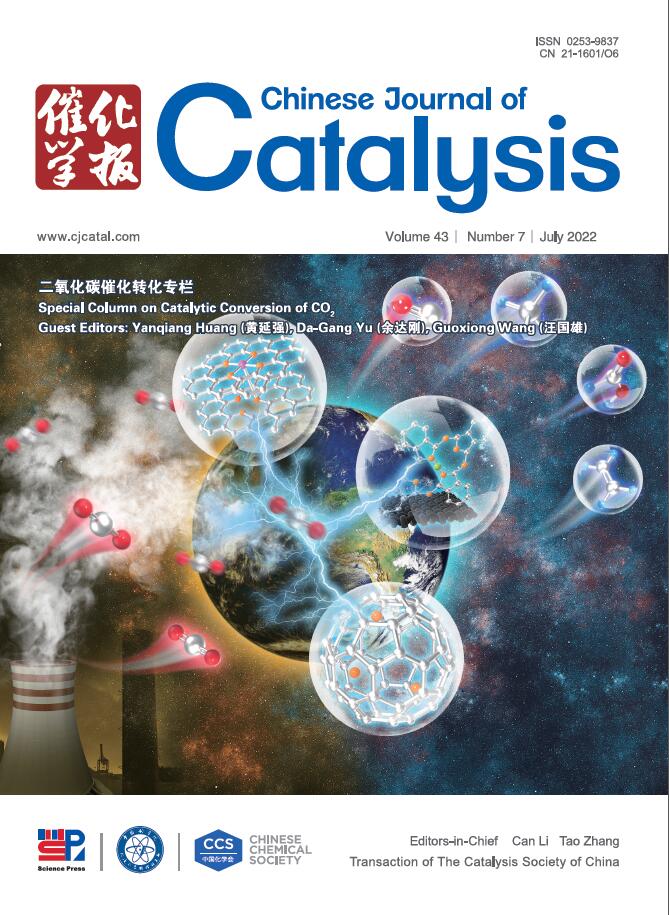Anchoring oxidation co-catalyst over CuMn2O4/graphdiyne S-scheme heterojunction to promote eosin-sensitized photocatalytic hydrogen evolution
Abstract
It is widely acknowledged that efficient charge separation and utilization of photocatalysts are key factors in determing the photocatalytic hydrogen production. Construction of heterojunction has been considered as a promising way to efficiently solve the spatial separation of photogenerated charges. In addition, the introduction of proper cocatalysts can realize the separation of electrons and holes of the photocatalyst and enhance the photocatalytic performance by promoting more carriers to flow to the corresponding active sites. Herein, the S-scheme heterojunction was constructed by introducing graphdiyne into CuMn2O4 for photocatalytic hydrogen evolution. Graphdiyne as a reduction semiconductor and in situ produced Mn2O3 from CuMn2O4 as an oxidation cocatalyst to promote the precisely migration of photogenerated electrons and holes to the corresponding reduction and oxidation sites of photocatalyst. Notably, the photocatalytic performance of the 600-CuMn2O4/GDY-40% (6-CG-40) could reach 1586.54 μmol g–1 h–1, which is 13.86 and 21.48 times higher than those of CuMn2O4 (106.73 μmol g–1 h–1) and graphdiyne (70.57 μmol g–1 h–1), respectively. Theoretical calculations and experiments results show that both in-situ induced growth of Mn2O3 oxidation co-catalyst and the introduction of to construct S-scheme heterojunction efficiently suppress the severe recombination of photogenerated electron-hole pairs, thus optimizing the photogenerated carrier transfer efficiency, and ultimately leading to the enhanced eosin Y-sensitized photocatalytic hydrogen evolution activity. This work provides a promising method for the construction of oxidation cocatalyst engineered S-scheme heterojunction for solar water splitting.


 求助内容:
求助内容: 应助结果提醒方式:
应助结果提醒方式:


